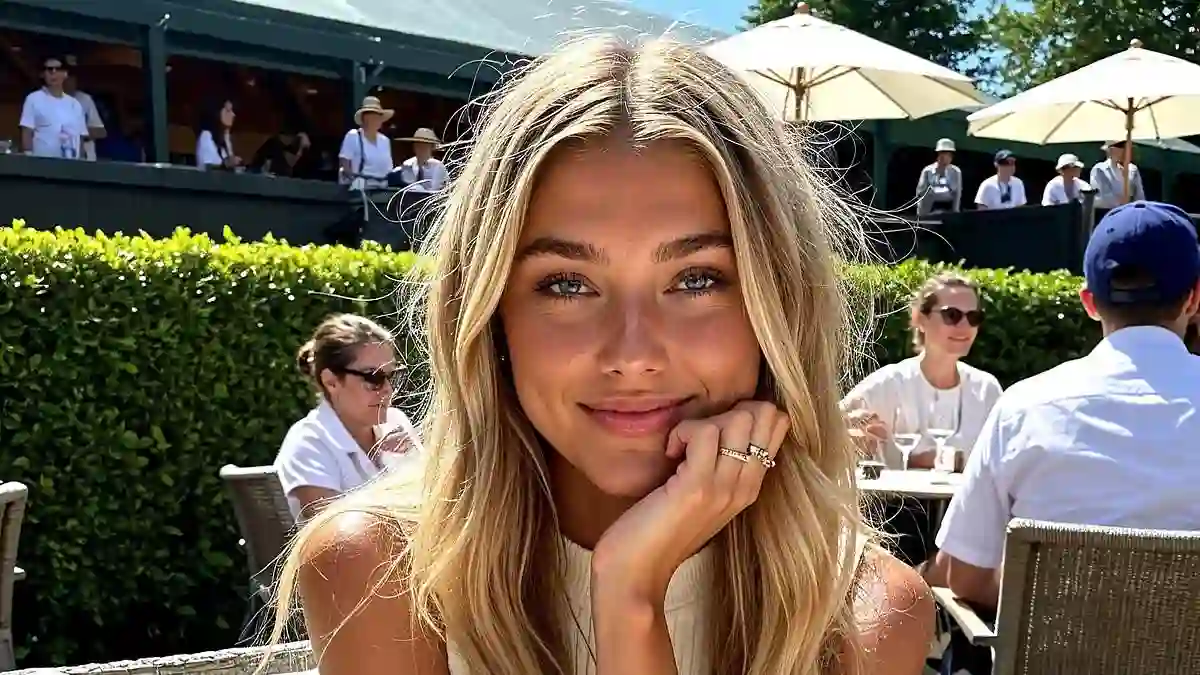The latest Guess campaign has a model who seems almost eerily familiar.
At first glance, her hazel, cat-like eyes might remind you of Doutzen Kroes, her smile and cheekbones echo Kate Upton, and her long legs and flawless skin could belong to Gisele Bündchen.
But look closer, and you’ll notice a tiny stamp revealing the truth: this isn’t a real person.
She’s entirely AI-generated, a virtual supermodel made from algorithms, not DNA.
This marks a first for Guess, a fashion house renowned for launching stars like Claudia Schiffer, Gigi Hadid, and Laetitia Casta.
It’s also thought to be the first time Vogue has run ads featuring a model that exists purely in code.
AI in Fashion Isn’t New, But It’s Growing Rapidly
Guess isn’t alone in exploring AI. H&M, Mango, and virtual influencers such as Marks & Spencer’s Mira have been experimenting with digital models for years, capturing followers and selling products along the way.
Once, AI seemed futuristic and distant, something out of a sci-fi film. Now, it’s reshaping industries, replacing journalists in newsrooms, extras in films, and now, models in fashion shoots.
For editors like me, the appeal is obvious.
Modelling has always been tricky — the models you want are rarely available when you need them, and high fashion often demands very specific looks.
AI solves this instantly, letting brands create the exact model their editorial vision requires.
Solving Old Fashion Industry Problems
Back when I was editing Cosmopolitan, we struggled to feature models with more realistic, curvier body types because agencies simply didn’t have them.
AI could have offered a cost-effective solution, generating any body shape or look on demand.
And then there’s the issue of reliability. Models sometimes arrive short, with damaged hair, bad skin, or even unhealthy habits.
Over my years at Women’s Health, Cosmo, and Elle, I saw young women pushed to extremes for fashion shoots.
AI removes all of that unpredictability and the ethical dilemmas it brings.
Financial pressure is another reason AI is appealing.
Fashion shoots are expensive — photographer fees, make-up artists, stylists, travel, accommodation — the costs add up.
AI eliminates most of that expense while still producing glossy, magazine-ready images.
Lastly, safeguarding is a major concern. The industry’s history of abuse, such as the allegations against Elite Model Management’s Gerald Marie, shows the dangers young models can face.
Virtual models sidestep those issues entirely.
The Cultural Cost of AI Models
Despite all these advantages, there’s a catch. Fashion isn’t just about selling clothes; it shapes culture.
Replacing real models with AI chips away at an entire creative ecosystem: make-up artists, photographers, stylists, and assistants.
These are careers with cultural significance, and AI could erode them.
Models bring stories, personalities, and real-life narratives that AI simply cannot replicate.
Cindy Crawford wasn’t just a face and body; she was the All-American story she carried off the runway. Kate Moss brought rock ’n’ roll energy.
AI can mimic appearances, but not the lived experience and charisma that make models culturally resonant.
Redefining Beauty or Narrowing It?
Perhaps the biggest concern is what AI decides is beautiful. Historical datasets tend to favor slim, Caucasian women.
That’s why the new Guess AI model resembles an amalgam of supermodels from the past 50 years — a homogenized ideal.
For young people growing up seeing these images, the message is subtle but powerful: this is the standard of beauty.
Unlike photoshopping or social media filters, which start with real humans and their natural diversity, AI models can erase it completely.
Influencers like Mia Zelu, an AI-created digital personality, illustrate the potential.
She captivated audiences at Wimbledon, despite not existing in reality.
Most viewers won’t realize she’s artificial, making her influence just as real as any human model — and perhaps more insidious.
AI vs Photoshop and Filters
Some argue AI is just an extension of photo editing. After all, magazines have been smoothing skin and reshaping bodies for decades, and social media filters do similar things.
But there’s a key difference: filters start with real human diversity, whereas AI is trained on patterns that often produce uniform, idealized aesthetics.
The result is a mass flattening of beauty standards.
AI is unlikely to spontaneously produce plus-size or ethnically diverse models unless explicitly instructed, undoing years of progress in inclusivity.
What This Means for the Future of Fashion
AI will impact every sector eventually — writers, directors, workers — and modelling is just the early wave.
But relying too heavily on AI risks creating a bland, homogeneous culture where everything feels the same.
Films, books, advertisements, and fashion could all lose the richness of real human input.
As we marvel at the new Guess girl, we must ask: at what cost does convenience come? The AI revolution in fashion promises efficiency and control, but it also threatens to erase the creativity, diversity, and humanity that give this industry its enduring power.
